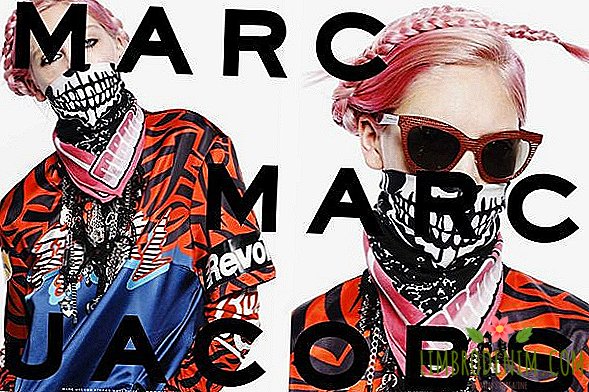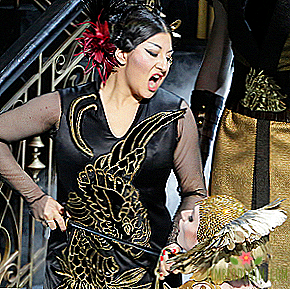How social networks affect fashion

Olesya Iva
During the fashion shows of haute couture Fashion Week, Suzy Menkes unveiled one of the main mysteries of the fashion industry on the Vogue website - the name of the designer behind the main anonymous brand of the last 25 years, Maison Martin Margiela. The name Matthew Blazey scattered around the world in a second, and after all, for the last five years, after Margiela left home, no one was able to figure out who is responsible for the brand's design. The case of Menkes and Matthew Blazey is a turning point in culture. Obviously, it is impossible to keep secrets today, as well as to artificially form an image of anything, the Internet will quickly put everything in its place.

On the day when we got access to unlimited Internet, and then to smartphones, the world turned upside down - and the fashion world as well. The revolution in the industry can be compared with such turning points as, for example, the appearance of ready-to-wear (thanks to Elsa Schiaparelli and Yves Saint Laurent) or trousers and mini-skirts in women's wardrobe (for this, thank Coco Chanel and Mary Quant). Yes, the Internet and social networks today influence and determine fashion. In addition, thanks to them, the next “new sincerity” appears, which today marketers sell with the same success as anonymity 20-30 years ago. Life is parading in the key of the reality show of the 2000s today, just not on TV, but on your iPhone - an ideal marketing tool. One thought that Stella McCartney, like us, makes selfies in the mornings, brings us closer to the brand more than an expensive advertising campaign.
Remember how Cara Delevingne filmed herself on an iPhone during the Giles show and looked for models for her capsular collection for DKNY on Instagram, and Nicola Formicetti spent a year ago casting Diesel for Tumblr on the #DieselReboot hashtag. Now Daria Verbova makes a series of selfies for Equipment, and Calvin Klein makes a commercial from the perspective of a mobile phone camera, which looks like an endless series of selfies or an animated Instagram tape (the campaign, by the way, is distributed via Snapchat and Tumblr). Marc by Marc Jacobs found faces for a new campaign on Instagram and Twitter on the hashtag #CastMeMarc, which, of course, could not help but worry professional models. Add to this the fact that every person can keep a report from fashion weeks today: from photographs and videos from Instagram, without getting out of the house. And as the last drop, The New York Times publishes the article “Fashion in the Age of Instagram”, where Alexander Wang admits: even at the stage of creating the collection, he wonders how things will look not only in stores and showrooms, but also in pictures in Instagram from the show.

Fashion is changing at such a rate that only online publications and social networks can relevantly cover it.

Thanks to the Internet, every potential client of the brand received his voice and a chance for 15 minutes of fame, and the relationship with fashion became like a dialogue. However, it could not be otherwise: fashion and social networks are related by the idea of self-presentation, image formation, and secondly, the fashion industry is changing at such a rate that, obviously, only online publications and social networks can illuminate it relevantly. This once again proves the incapacity of glossy magazines, which are becoming obsolete every year. It is understandable - how can you highlight trends when you rent a room three months before its appearance on the shelves, and in the fashion industry everything changes every second? Here you have to be either part of the industry's elite, like Anna Wintour and Frank Sozzani, who themselves define the most important changes, or be a brilliant visionary and critic. Even Suzy Menkes moved from print to the web.
Fashion is a visual product and it is not surprising that it is most natural to fit into social networks that work with images and short messages. At the same time, the number of subscribers that luxury and democratic brands have is the same, except for H & M with almost three million followers. So, the same British brands Burberry and ASOS have about two million subscribers, while Zara (USA) and Alexander Wang have about 300 thousand, Prada and Dior have about 1 million, and Urban Outfitters has 1,600 thousand (exactly same at Chanel). However, the tool of social networks different price segments are used in different ways. The suite is primarily to maintain the image (and at the same time maintain the number of customers), the mass market to increase the number of customers and, as a result, sales. Therefore, in instagrama expensive brands you can basically find pictures with backstage and celebrities in clothes, and in the mass market - things in the layout and street style. But the point of intersection is. Following the mass market, the suite becomes more diverse. Personalities shape the agenda, and this makes fashion become individual, and designers want to think about how, by preserving the brand's DNA, to please everyone: both those who need comfort, and those who need sex, and those who need eccentricity, and those to whom - mediocrity.




